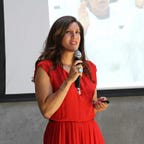User Research Is Not Enough
A few months ago I was asked to lead a process for an indigenous social development organization, Ngāti Whātua Ōrākei, Whai Maia LTD. They wanted to turn their most sacred, beautiful taonga (gift or jewel) of land, currently an untouched expanse of scrub and grass, into a public reserve that brought home the tribe to heal, celebrate their history, and immerse in their culture, and welcome tourists from across the world and from their own community.
The CEO and I talked about how the plan for this piece of land wasn’t really about the buildings and landscaping that would eventually be etched into its body, but rather, the plan was about the people — their particular needs and dreams. So we went out and interviewed the families, gathering insights; we branched into futures research, to extrapolate the risks and opportunities to the tribe that will come with changing social, economic, and environmental trends. But as we got closer to designing what activities the new development would support, we found we needed to identify the stories that would drive the creative process.
At Stanford’s d.school, where I did a fellowship, we focused on the ‘human-centered’ mandate at the heart of design thinking. We prioritized user research — actually interviewing, observing, and immersing in the lives of our users in order to better understand their latent needs and how we might serve them. And then the ideation phase would come, and we learned brainstorming techniques to push our capacity for creativity in generating concepts.
But I’m finding that with this project, with Whai Maia, I need to call back to my English major roots to get the tools we’ll need to brainstorm. It’s not enough to reach the high water mark in the quality of our creativity, it’s vital that the origin for our brainstorming comes from the core narrative framework of the tribe.
There are lots of stories about their ancestors, the different pieces of history that relate how they came to Aotearoa (the long, white cloud, aka New Zealand), their traditional ways of life, and the trauma of colonialization. However the collection of stories themselves weren’t enough, we needed to pull out the underlying narrative framework, the central conflict, theme, and logic to the larger arc of the tribe’s story. Here’s an example, developed by John Truby, a master story consultant in the film industry:
Foundational Storyworld Arc: (the framework from which all stories and experiences in the master plan are built)
Theme/ Controlling Idea: (expresses the meaning of the story they want to tell. identifies how and why something changes from the beginning of the story to the end) ex. “the organization triumphed because it was more agile than its competitors”
Designing Principle: (idea around which the story is synthesized, provides its internal logic and the overall strategy for how the story will be told) ex “force the organization to make a difficult transition from its current position as a market leader”
Central Conflict: (focuses on the question, ‘who fights whom over what’?) ex. the organization is in a fierce competitive struggle with a nimble new competitor that has just entered the industry”
The altered design process looks like this:
In order to craft this storyworld arc for the tribe, we almost become part time screenwriters. Over the next few months we’ll gather the stories of ancestors and mythology that represent the core canon for the tribe. And we’ll use the Hero’s Journey framework from Joseph Campbell to do that.
Over the last couple weeks, our interns spent some time with me, testing these exercises. We didn’t start out with the monumental task of identifying the core stories of their tribe, but rather something more personal. The brainstormed over 30 hero’s that inspired them — some tribal members living today, some their ancestors hundreds of years gone, others are part of their mythology going back centuries, and still others were modern public figures, like Oprah.
Once we go through a process of identifying the core stories, we’ll synthesize them with a group of the most passionate tribal storytellers, identifying the themes and life lessons. It’s critical work to get to a tangible product, a master plan, for the development of the land. We know through the user research that there is a lot of pain still held by the tribe. Most whanau (family) members are resilient and tough, they’ve survived the loss of almost all of their ancestral land, the burning of their homes, and systemic racism too often by leaving the tribal village and letting connections to the tribe wither. In order to heal and bring people back to the land, they will need to ascribe a meaning to these stories of pain, a meaning that teaches compassion for the coping mechanisms chosen, celebration of their tribe’s language, songs, and rituals they preserved, and hope for the future.
This is just one of the historical facts that must be framed in a story of the tribe’s own design in order for their families to reunite and move forward together. Left alone, these facts from the colonial trauma could easily turn into stories that lead to irreparable wounds — in these generations and those in the future.
Instead we’ll use the tools of creativity to create a storyworld structure — a central conflict, theme, and logic — that lifts the tribe and propels it toward a brighter future. And then we’ll use that structure as the seed to get creative and brainstorm activities of healing, learning, and celebration to prototype on their ancestral lands.
